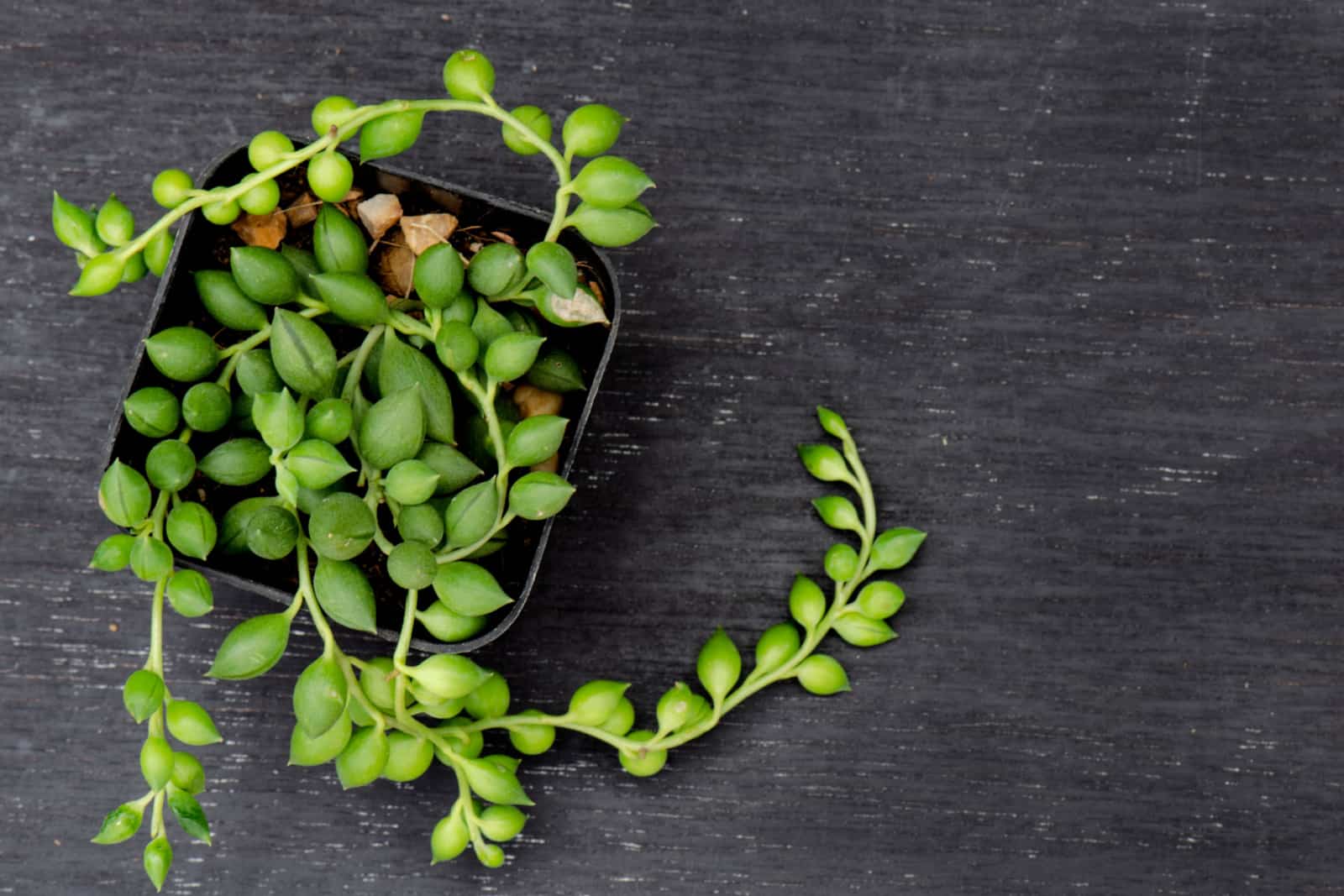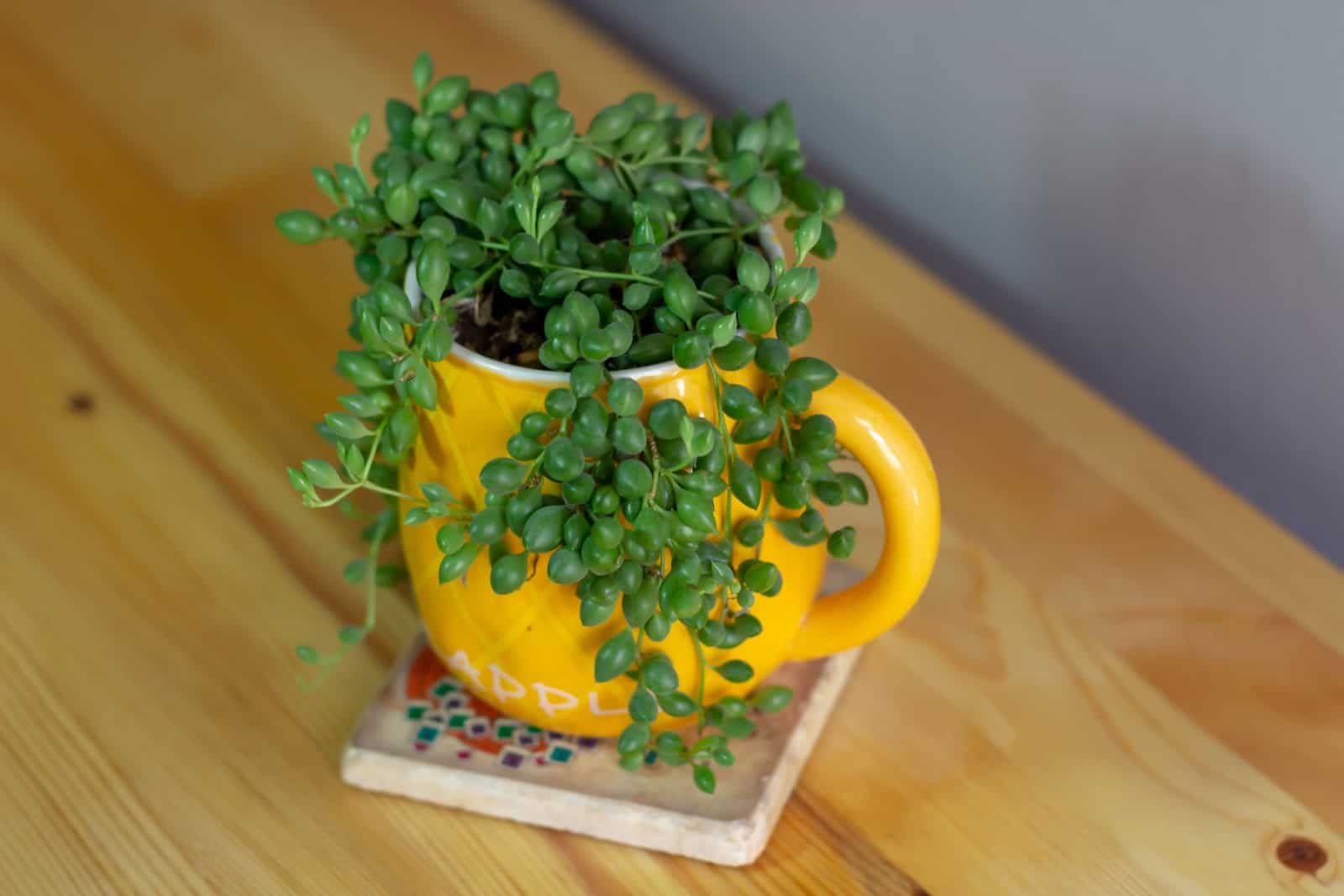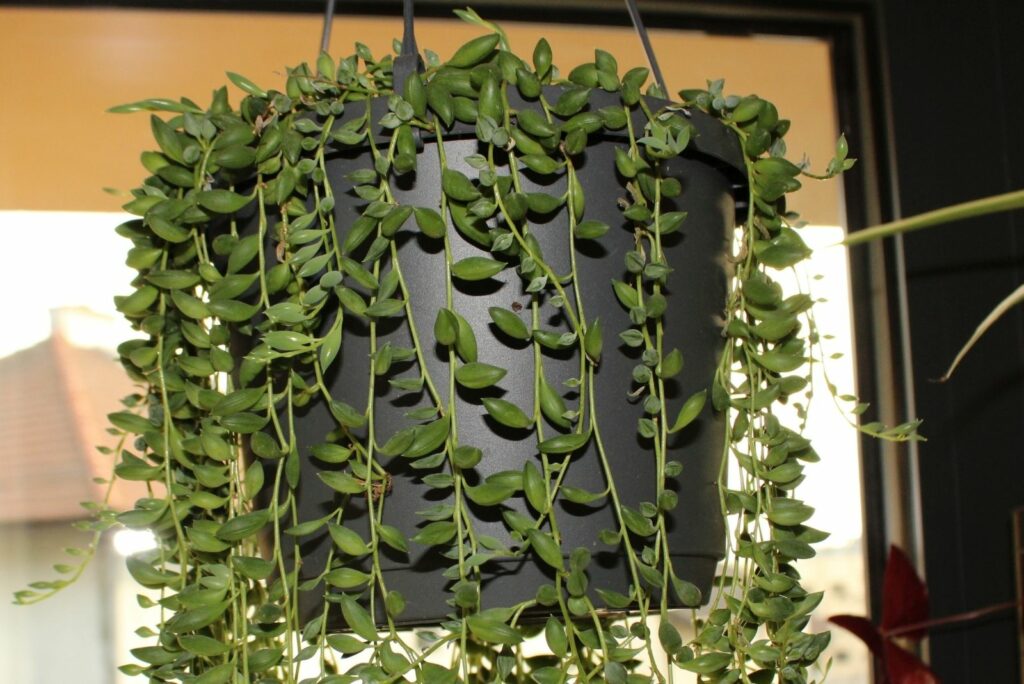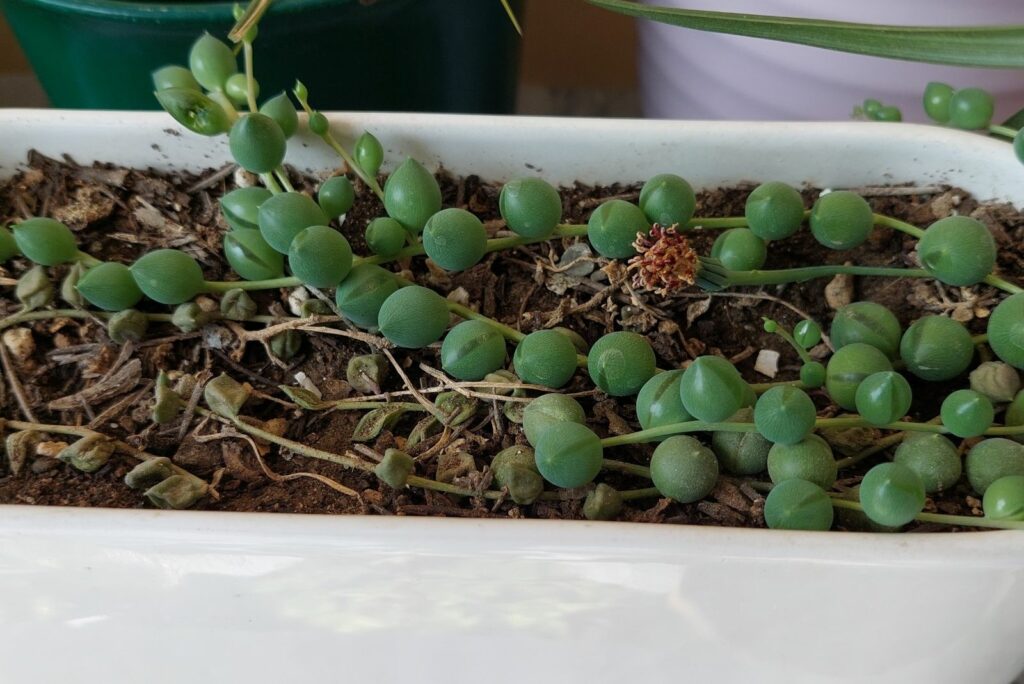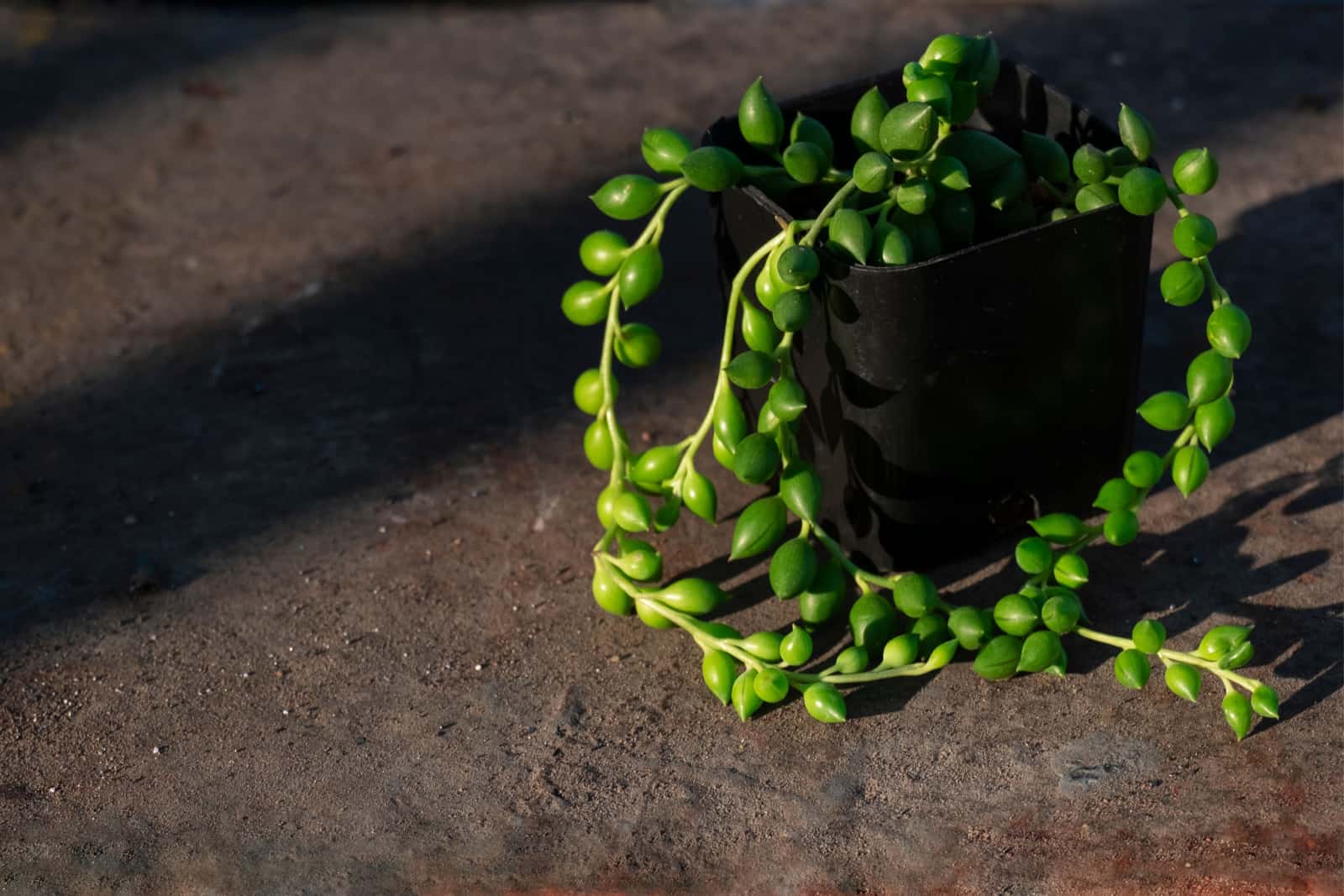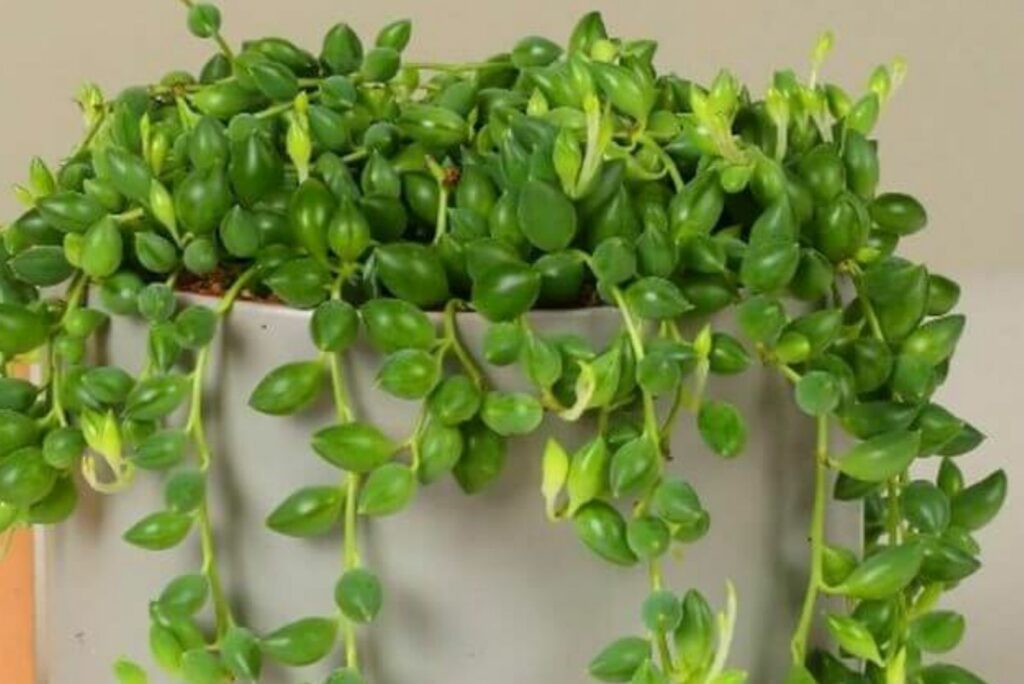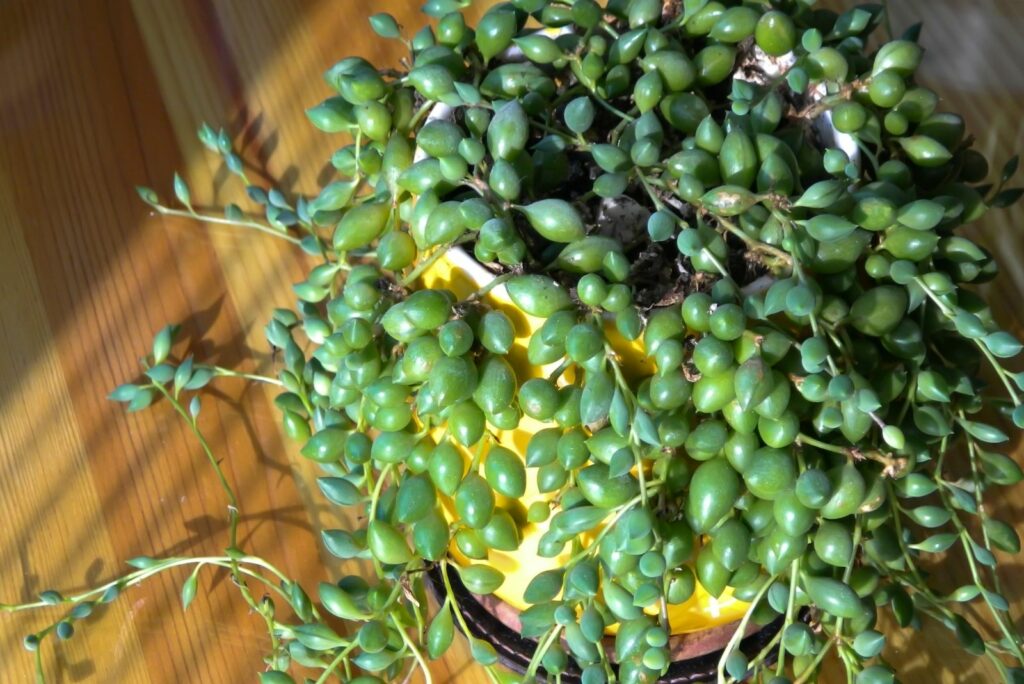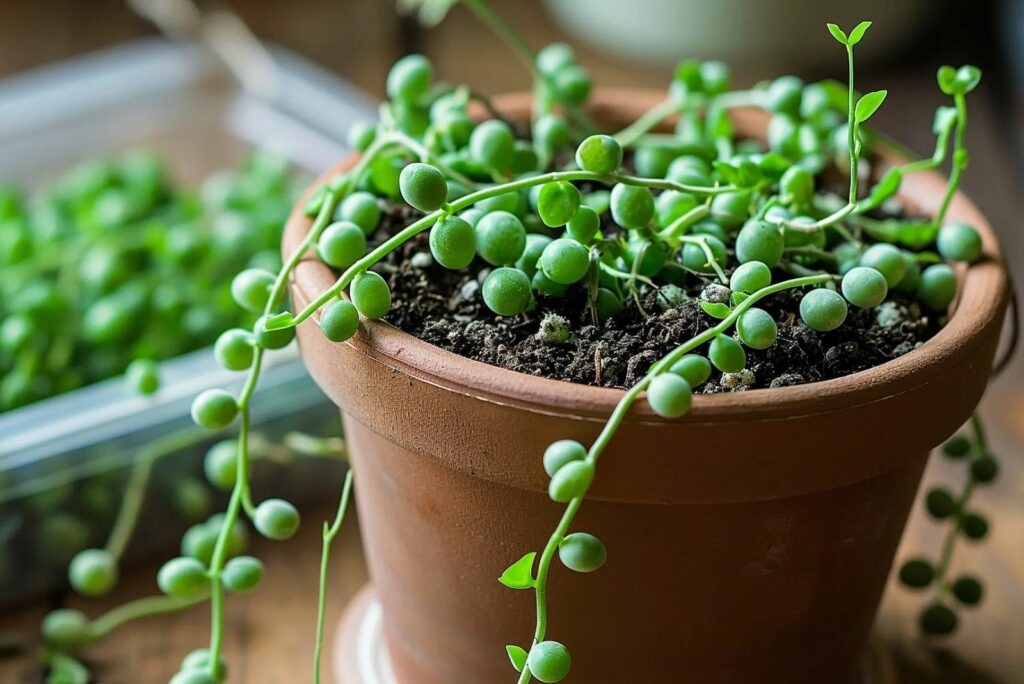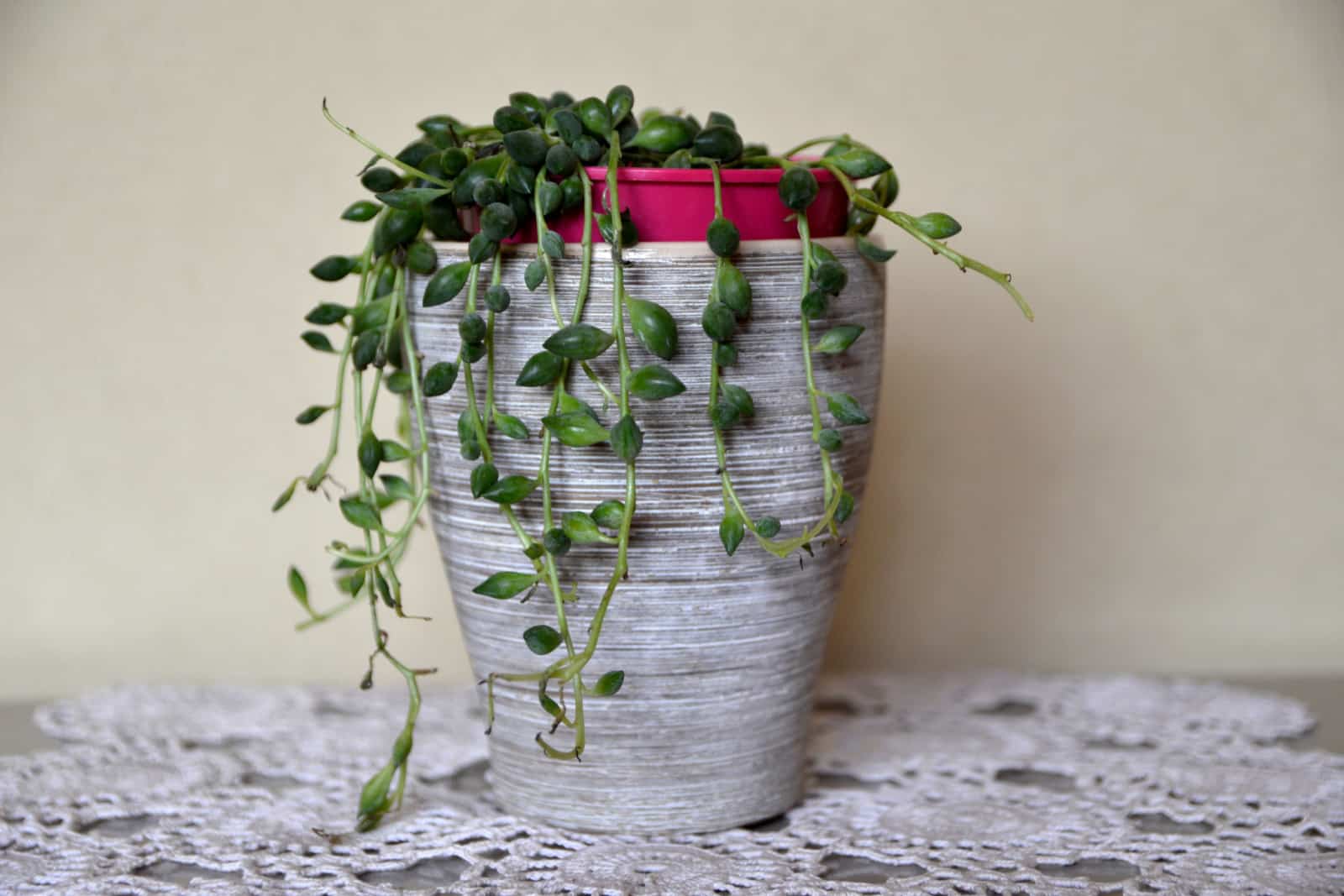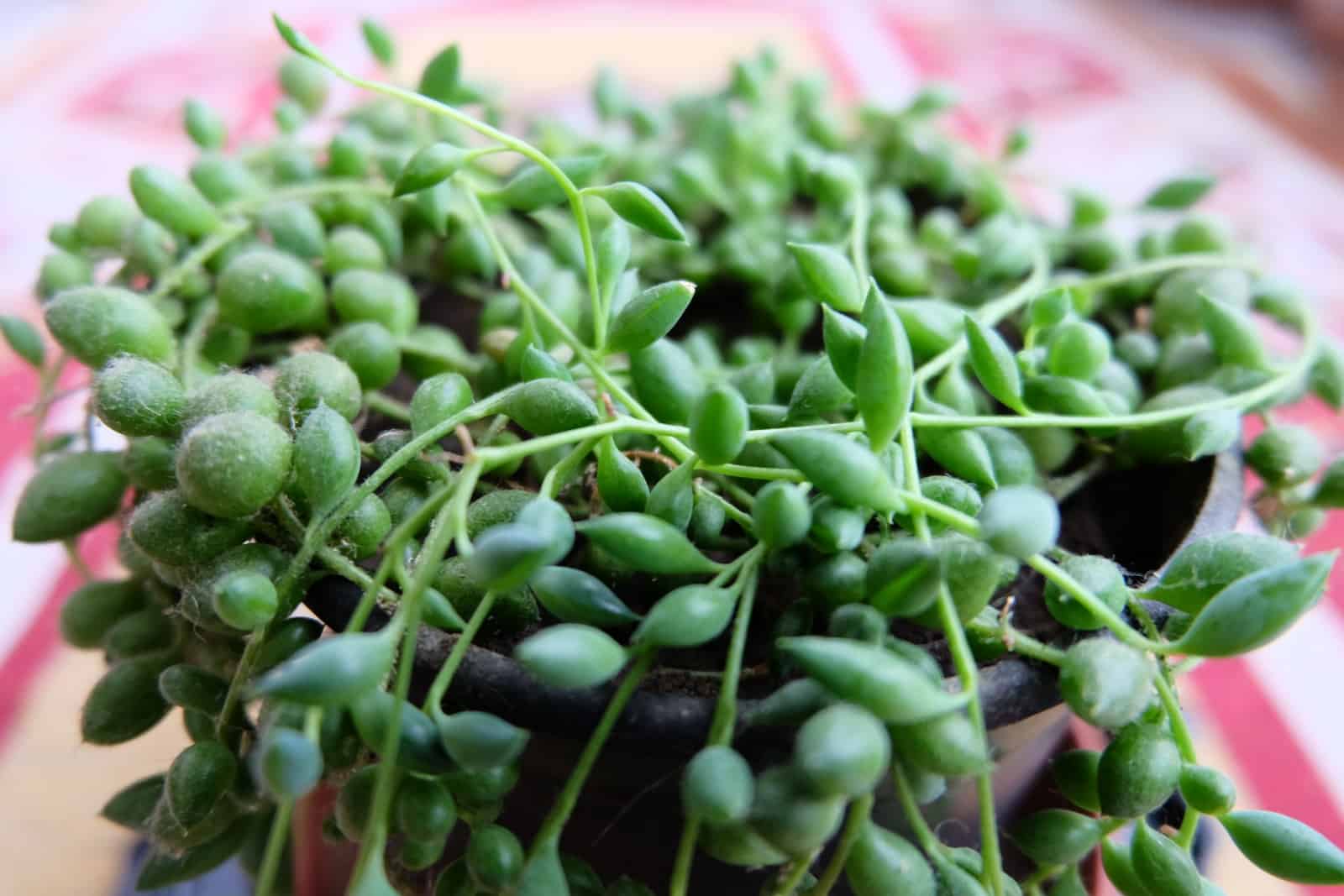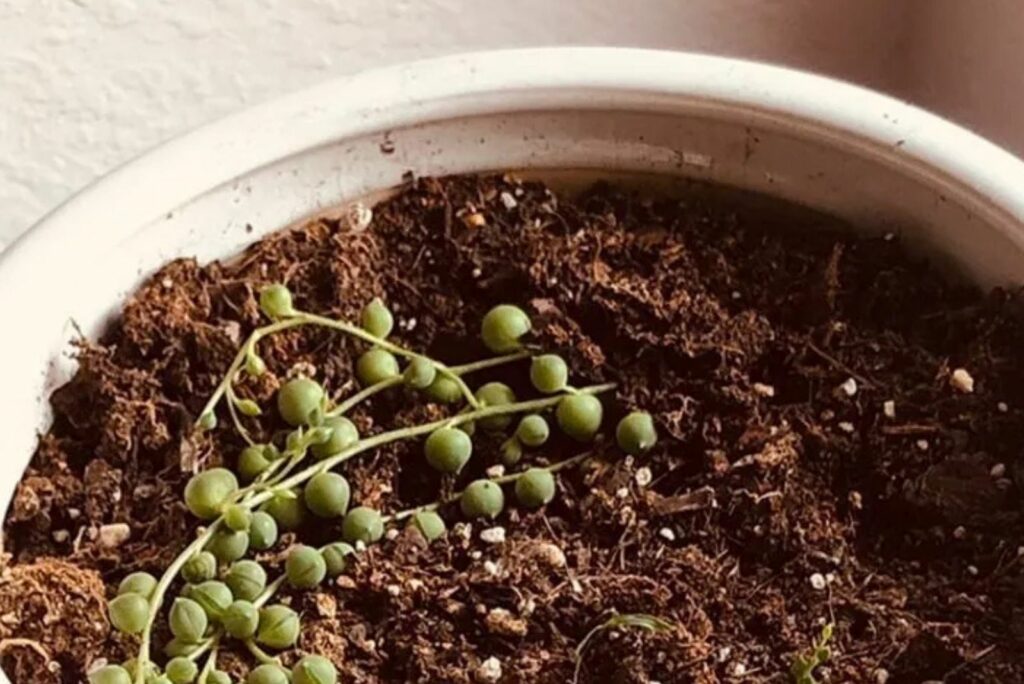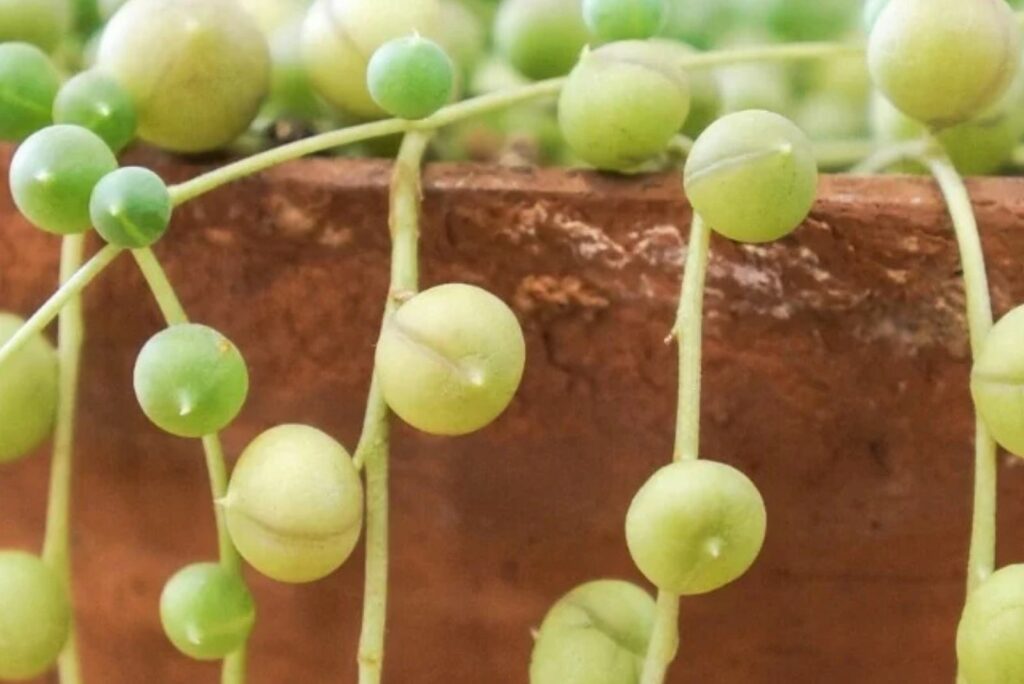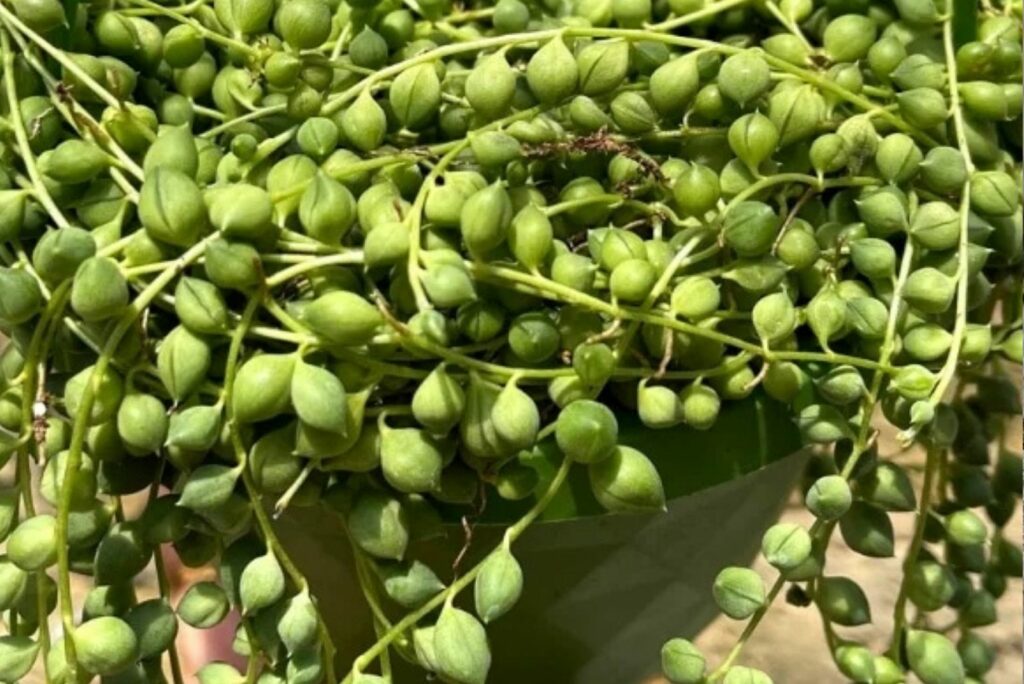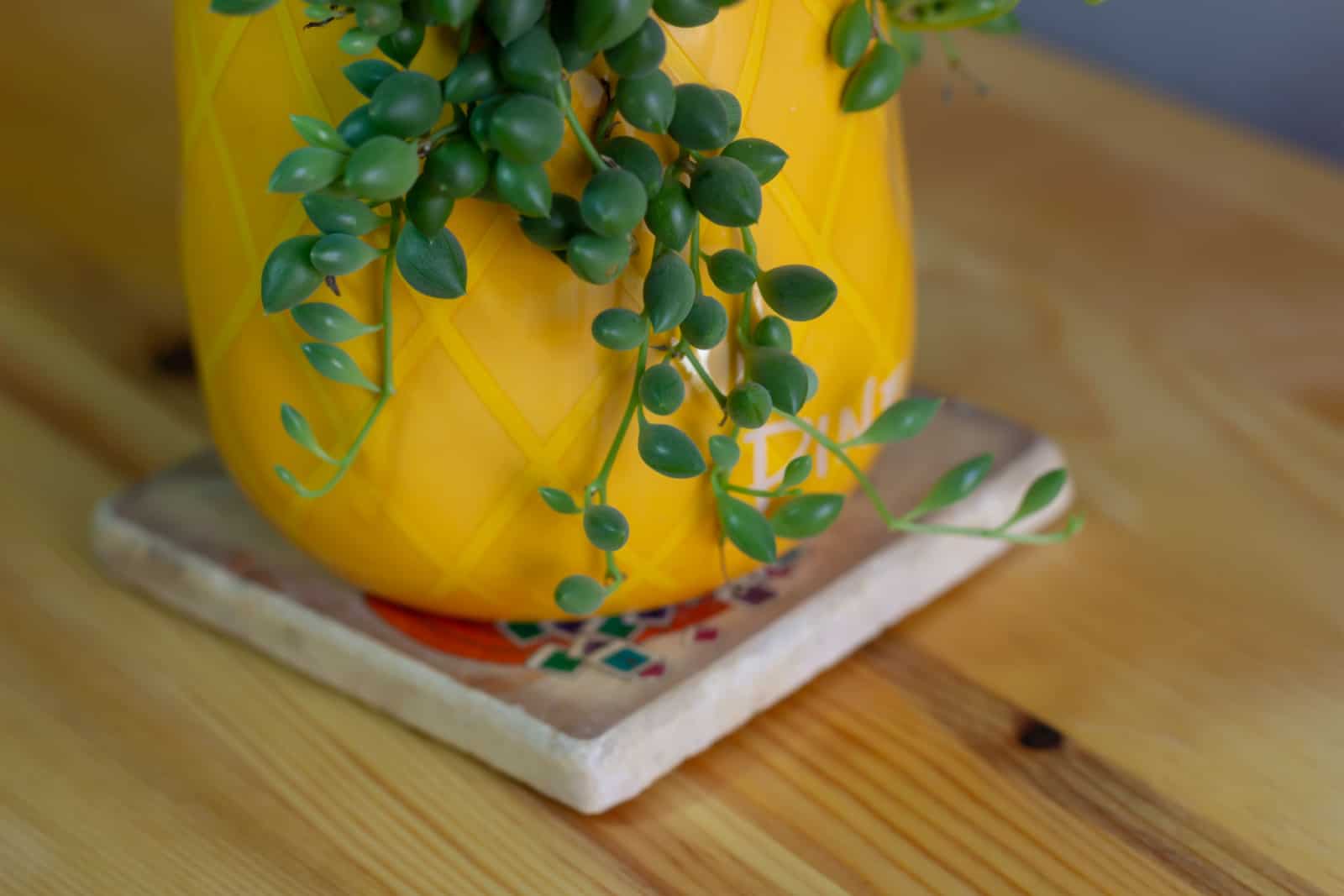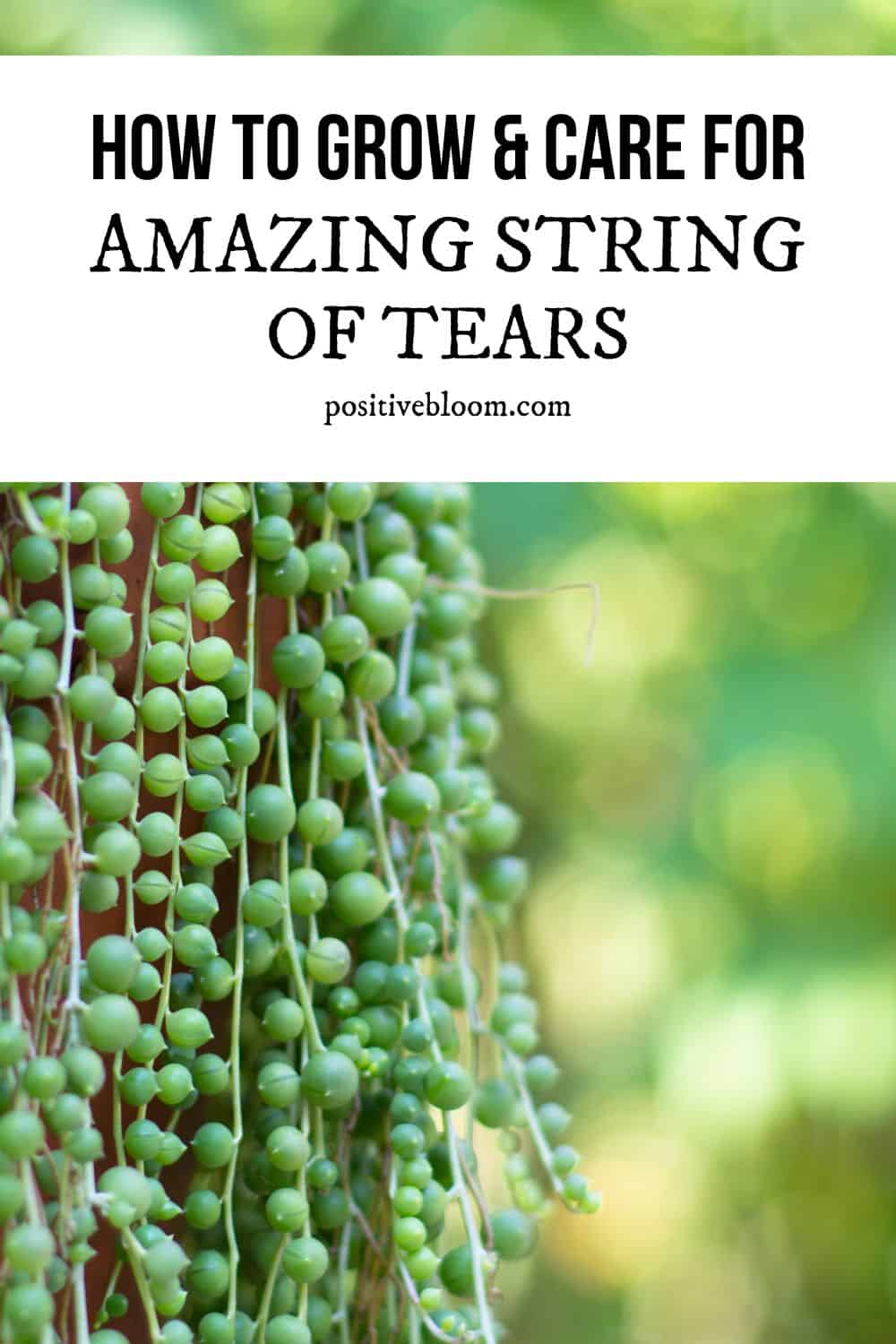I’m sure you have heard of many plants with the term ‘string of’ in their name, like the string of hearts, string of pearls, string of dolphins, and string of bananas, to name but a few!
But there’s one plant that doesn’t have a very cheery name – the string of tears, a unique succulent from the Curio genus.
Well, the name stands for a reason; the string of tears features unique, teardrop-shaped leaves that grow on long vines.
I’ll give you more details about the plant’s features and taxonomy, and I’ll also tell you how to care for and propagate a string of tears.
Here’s some basic info about the string of tears plant:
[table id=495 /]
Let’s get started!
What Is The String Of Tears?
The string of tears plant is a close relative of the more famous string plants, such as string of pearls (Curio rowleyanus aka Senecio rowleyanus), string of bananas, string of dolphins, and string of rubies (Ruby necklace).
It may be pretty confusing to differentiate these plants, but only when it comes to names.
These plants have recently been reclassified to the Curio genus. That’s probably the main cause of confusion.
Don’t confuse ‘string of’ plants with a string of turtles, which is actually a Peperomia variety.
The string of tears belongs to the Asteraceae family. Its native habitat is South Africa – Namibia to be more precise.
So, how can you identify a string of tears in terms of appearance? This trailing succulent plant produces vines that may grow up to one foot long.
This Curio plant looks incredible when grown in hanging baskets. Still, it also has creeping stems, which makes it perfect for growing as a groundcover.
The focus is on the glossy leaves, and they really make this plant special. They resemble teardrops or raindrops, hence the name.
Additionally, the string of beads plant produces white flowers that are trumpet-shaped.
String Of Tears Plant Care Guide
I have good news for you – the string of tears care guide is simple because this is a low-maintenance plant.
The string of tears requires bright indirect light, warm temperatures, low humidity, well-draining soil, infrequent watering, feeding every two weeks (during the growing season), and annual repotting.
Let’s get into details!
Light Requirements
If you want your string of beads to grow healthily, you must ensure it gets at least six hours of bright light daily.
You’ll get the best results if you expose your string of watermelons to direct sunlight, but only in the morning.
You’ll need to protect it from the intense afternoon sun and ensure partial shade.
Avoid growing this succulent in low light because it can stunt the growth and cause wilting.
Humidity Requirements
When it comes to succulents and humidity, it may be tricky to determine which plants require high or low humidity.
Well, the string of raindrops is somewhere in between. It requires moderate humidity, so if the humidity in your household is lower than 50%, you can increase it using a humidifier.
You can also put a pebble tray below the plant’s pot, move it to a bathroom or kitchen, or group it with other indoor plants, such as sedum.
Temperature Requirements
What’s the perfect temperature range for a Curio herreianus when it’s grown as a houseplant?
Luckily, this succulent will grow perfectly in average household temperatures.
You should remember one essential thing regarding this plant and temperature: it’s not frost-tolerant and will perish if the temperature falls below 30 degrees Fahrenheit.
When grown as a houseplant, the string of raindrops shouldn’t be placed near heating devices or cold drafts.
Soil
If you want to stay on the safe side and not experiment with homemade soil mix, just purchase ready cacti or succulent soil blend.
These plants thrive in well-draining soil, so you should never let them sit in soggy soil as it can kill them.
If you’re making your own soil blend, make sure you add well-draining ingredients. You must also add materials that enhance aeration because airflow is necessary for good root development.
Purchase a regular potting soil and, to make it perfect for the string of tears, amend it with perlite, pumice, gardening sand, or vermiculite to improve drainage and aeration.
Watering Schedule
The good news is that you won’t kill a string of beads if you leave it without water for a while because it can hold water in its leaves and use it during periods of drought.
Waiting until the soil of the string of raindrops plant is entirely dry before giving it more water is the key to a perfect watering schedule. All succulent plants are prone to overwatering, which can result in root rot.
The rules aren’t very strict, and there’s no definite answer to how long you should wait between waterings in terms of days or weeks.
This is because season, temperature, light, and humidity all affect the watering needs of this succulent.
Many growers want to know how they can tell if the soil is completely dry. You can check the moisture content by inserting your finger into the soil, lifting the pot (a lightweight pot means your string of tears needs water), and looking at the color of the topsoil (light brown is a sign it needs water).
Alternatively, you can use a moisture meter.
Don’t spare water during irrigation, and always give your string of raindrops a good soak, only stopping watering when water comes out of the pot’s drainage holes.
Fertilizing Schedule
I feed my string of beads every two weeks, and it seems like the plant loves it. Of course, I only fertilize during the growing season, i.e., during its active growth period.
You won’t notice new growth during winter, so the plant doesn’t need feeding.
I recommend using a balanced, water-soluble fertilizer. To avoid overfeeding, dilute plant food to half strength.
Pruning
The curio herreanus doesn’t require regular pruning. Pruning is obligatory only when your plant displays damaged, discolored, or diseased leaves.
This Curio plant has a creeping/trailing growth habit. You can prune trailing stems to get a specific shape, just make sure you always clean your cutting tools to avoid transferring pests or diseases to your string of raindrops.
Repotting
If your string of watermelons needs repotting, wait until the early spring to reduce stress.
Use a soil mixture designed for succulents or cacti, and get a pot with lots of drainage holes.
These plants grow best in containers made of terracotta and unglazed ceramic.
Use a larger and deeper pot than the one you already have – two to three inches deeper and larger should suffice.
Remove your Curio plant from its current pot and put it in the new pot filled with soil mix.
Curio Herreianus (Senecio Herreianus) Propagation
One of the best things about these succulents is that they’re easily propagated by stem cuttings.
Before you start propagating, inspect your string of watermelons to make sure it’s fully healthy.
Fill a nursery pot with succulent or cacti soil mix. Get sterilized scissors and cut a few stems (between four and five inches in size) just below the leaf node.
You should leave the Senecio herreianus cutting to callous for about a day.
Make a hole in the middle of the soil and carefully insert the stems. You should bury the cut end about an inch in the soil.
Put the nursery pot with the cutting in a well-lit area and water after a couple of days.
Common Problems With The String Of Tears Succulent
Growing string of raindrops plants is a wonderful experience. Still, it’s not entirely a problem-free plant.
The issues I’ll list below typically affect other plants from this genus, such as the string of pearls plant.
Let’s see some of the most common problems with this Curio plant.
Pests & Diseases
Common insects drawn to the string of beads include aphids, spider mites, gnats, and mealybugs.
Insects frequently take over diseased and weak string of beads plants.
You should prevent overwatering, spritz this succulent plant with a neem oil solution, relocate it to a spot with good ventilation, and routinely check it for pests.
Two natural pest control techniques for insects on your string of watermelons are neem oil and insecticidal soap. Consider using these techniques first before turning to synthetic insecticides.
Regarding diseases, the most common one is root rot. You need to remove the diseased string of tears roots and repot it in fresh soil if it suffers from root rot.
Leaves Wilting
If your string of raindrops plant starts wilting, you should check the soil moisture content because both overwatering and underwatering can lead to this issue.
If your plant lacks water, water it thoroughly and repeat every three to four days until it’s back on track.
If there’s too much water in the soil, you should let the plant dry well (don’t expose it to direct sunlight to promote drying) and check the root system.
Softened Stem
Another consequence of overwatering is softened stem(s). As mentioned, it leads to root rot and makes it simple for soil-borne fungi to take hold.
You can avoid this situation by checking soil moisture before watering. You can attempt to revive the plant by letting it dry and monitoring its progress.
If the string of tears plant is severely damaged, you can prune off any healthy stems and replant them in a tiny container with fresh soil. Dispose of the diseased soil and roots by putting everything in a plastic bag and sealing it tightly. Before using the pot again, sterilize it.
Wrapping Up
All ‘string of’ plants, including the string of hearts, the string of pearls, and variegated string plants, make a great addition to any household.
You must admit that the string of tears is one of the most beautiful plants from this genus. Its teardrop-like foliage leaves everyone speechless.
Take good care of your string of tears and inspect it regularly. One more thing, don’t forget to propagate it!
Until next time.
Like this post? Share or pin it for later!

